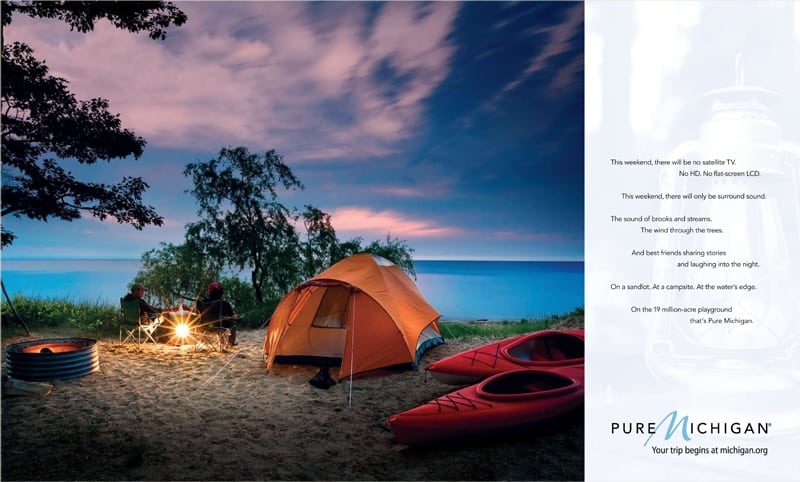Skift Take
Social media has been the darling of destination marketing for the last five years, but you may be surprised how those impressive Facebook and Twitter numbers translate to actual visitors.
Destination marketing organizations have had some spectacular social media growth over the last six years.
The average year-over-year growth between 2006-2012 for Facebook, Linkedin, Pinterest, Twitter, WordPress, and Google+ is over 900%. That’s 900% growth per year across all platforms. Everyone with a social media presence should have amazing growth — even if they’re not that good at it.
The big question is: how do social media efforts translate into boots sandals on the ground? Social media has been around long enough to compare social data with arrival data, so let’s have a look.
May as well start with Australia, the reigning world social media champ with 5.9 million likes on Facebook. Their social media explosion occurred in 2011 and has been continuing to grow since. Between 2010 and 2011, their international arrivals increased by 3.8%. In 2012, when their Facebook fans jumped from 1.2 million to 4.1 million, international arrivals increased by 1.3%. In 2013, international arrivals increased by 4.9%. Those growth figures don’t put Australia in the top 15 growth destinations or even above average for growth in the region.
What’s the explanation? Naturally, there are several factors involved, but it’s fair to surmise that just because people like cute pictures of kangaroos and koala bears (a leading component of their social media success), doesn’t mean they’re ready to shell out $6,000 for a trip to Australia (assuming a two-week stay for two people traveling from North America or Europe).
“That assessment fits with the data I’ve seen and compared,” said Dave Serino, a destination marketing strategist at TwoSix Digital. “If you compare Australia’s web traffic with New Zealand’s, for example, you see that Australia gets more visitors, but they also have a higher bounce rate and their visitors are spending considerably less time on the site than New Zealand’s visitors are. Koala bears, kangaroos and Australia’s other beautiful photos may help with brand building and pique interest in future travel, but it doesn’t appear to be highly effective in keeping consumers engaged for extended periods of time.”
Tourism Australia doesn’t look at it that way. “Visitor demand is complex,” said Jesse Desjardins, Tourism Australia’s Head of Social Media, “driven by a range of factors which include destination appeal, access and, of course, destination marketing, of which social is now an important part. Our team spends a lot of time finding and creating the right content that we know our fans and followers will enjoy and look forward to receiving.”
How about an example from another social media star: Michigan. They’ve had the leading social media presence of any state in the US over the last five years, the most visited website of any state, the sixth biggest state tourism budget and the Pure Michigan campaign has won just about every destination advertising award. But Michigan only ranked 28th out of 50 in terms of desire to visit.
What’s the explanation? Hard to say, but here’s a guess: The things being promoted in the Pure Michigan campaign — camping, canoeing, looking a fall foliage, sailing on a lake while the sun is setting — can be done in nearly 28 out of 50 states. And with a backdrop so similar that it would be difficult for even Michiganders to tell the difference. So there’s a good chance potential visitors may look at Michigan’s beautiful images and think: I can go camping in a place like that about 30 miles from where I live – thank you for reminding me.
There have been and will continue to be successful social media campaigns by DMOs, but it’s not a magic bullet. Having a lot of followers or “likes” does not necessarily translate to having a lot of visitors. Every DMO should now be able to compare their own social media growth to the medium’s growth in general and to arrival numbers and get a better sense if a correlation exists.
Basic social media engagement is far more likely to get someone to pick up a new book or test a new flavor of yogurt. When it comes to precious vacation time and a family’s limited budget, many people understandably want a stronger hook.
For years, many social media experts have counseled DMOs to be content curators, in some cases giving them a strict regiment to follow with a certain number of daily Tweets and posts. Maybe five or six years ago, you could fire off a Tweet like “Come check us out in the off-season, there’s still plenty of great stuff to do here” and get a decent response. Now messages like this get lost in a Twitter feed. While the audience is more vast, so is the competition, watering down the impact of the average message.
“You have to be careful,” said Dave Serino. “Too many messages from the destination, especially too many of the wrong kind, can disturb the user’s social experience and work against you. It’s important to find the right balance.”
Doug Lansky is the Destinations Editor for Skift, an author and travel writer who has been published in publications from The Guardian to National Geographic Traveler, a consultant for destinations, and a speaker at tourism conferences around the world. More at www.douglansky.com.
The Daily Newsletter
Our daily coverage of the global travel industry. Written by editors and analysts from across Skift’s brands.
Have a confidential tip for Skift? Get in touch
Tags: australia, instagram, new zealand, pure michigan, social media, tourism
Photo credit: Part of Pure Michigan's advertising campaign. Pure Michigan
